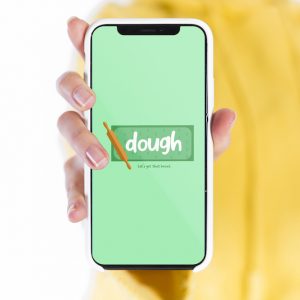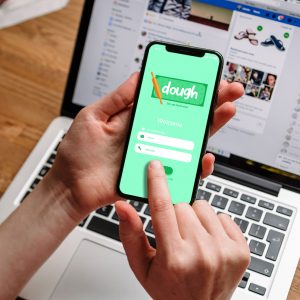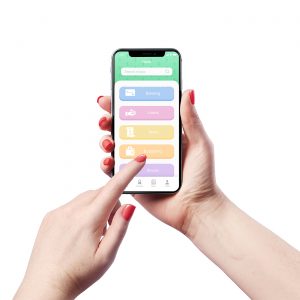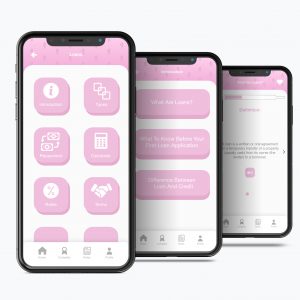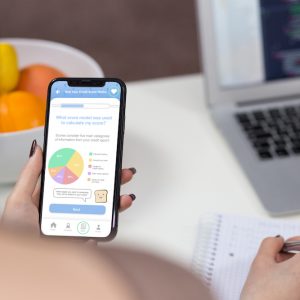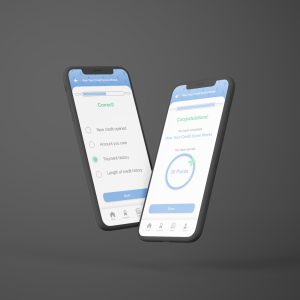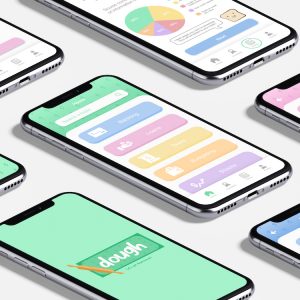Product Name: Dough: Let’s get that bread!
Thesis Theme Allocation: Financial Services
Topic/Problem Description:
The average American is $38,000 in debt and increasing. Over half of Americans feel anxious or insecure about money “often” or “all of the time.” Further data shows that one in three Americans say they have not spoken to anyone about financial planning (Planning & Progress Study 2018, 2018). With that being said, only 16.4% of United States High School students are required to take a financial literacy course to graduate (NGPF Research Report, 2017).
So, why is that? Why do Americans feel they are not financially literate to making a concrete budget and plan for themselves? Whose responsibility is it to teach others how to become financially independent and confident? Is it your parents, the educational systems, yourself?
Initial research showed that there was a lack of education at a young age. Therefore, focus was directed to a young audience to try and approach learning about financial literacy before problems arise. That way they learn how to form positive habits and behaviors before they become independent and can be prepared.
With these factors in mind, how might we improve financial literacy for young people (ages 14-18) so that they are more knowledgeable and disciplined to be better equipped for their future financial independence?
Primary research showed that even though this demographic may be financially literate, they may not be financially disciplined. This age group not only needs to become more educated but they need some kind of an incentive to want to learn more and actually practice this topic. If there is an incentive then they will be more willing to practice positive behavior, in turn become more disciplined.
Iterations of ideating and implementing an incentive consisted of designing a gamifying, competitive experience amongst friends. Through user testing, further research showed that users did not feel comfortable with competing with friends when it came to finances.
Solution:
“Dough” is an application based solution that acts as a convenient and centralized resource for young adults around financial literacy and personal finance.
The user can choose from topics such as banking, loans, taxes, stocks and more. Within those topics are different categories. Example: If “Banking” were the topic, then some of the categories would be checks, debit cards, credit cards, credit scores etc. It introduces basic information as well as quiz the user through multiple choice and fill in the blank questions. A character named “Crumb” will follow the user to help them along the way and give real world examples.
To facilitate engagement, users are given rewards. After all categories within a topic are complete, the user will be given a number of points, which will turn into a money value. Example: If a user received a total of 570 points for completing all of the categories within the “Banking” topic then they will earn $5.70.
Users will receive this money value from their bank, acting as something similar to a cash rewards or cash back. Through the onboarding process, users can connect to their bank and can either set up direct deposit or link to their Venmo. This is a benefit for the banks as a long-term investment. If their customers are educated, they will make better decisions and more money. As a result, making the bank more money, not to mention building a trustworthy relationship with a consumer at a young age.
This solution is significant because it gives users a foundation of knowledge within financial literacy. It is a centralized resource that is convenient and applicable to the demographic. Teenagers will be learning, in turn making them more knowledgeable. They will be competing against themself to see how well they can do to win the most points (and money), in turn practicing positive behavior without realizing and becoming more disciplined.
Prototype – Interactive prototype- click the app below to open it.
Keyboard accessible prototype (follow link, then use arrow keys)
References:
- (2018). Planning & Progress Study 2018. Retrieved May 01, 2020, from https://news.northwesternmutual.com/planning-and-progress-2018
Ranzetta, T., & NGPF. (2017). NGPF Research Report Finds That Only 1 in 6 High School Students Nationwide Required to Take Personal Finance Course To Graduate. Retrieved May 01, 2020, from https://www.ngpf.org/blog/personal-finance/ngpf-research-report-finds-that-only-1-in-6-high-school-students-nationwide-required-to-take-personal-finance-course-to-graduate/

